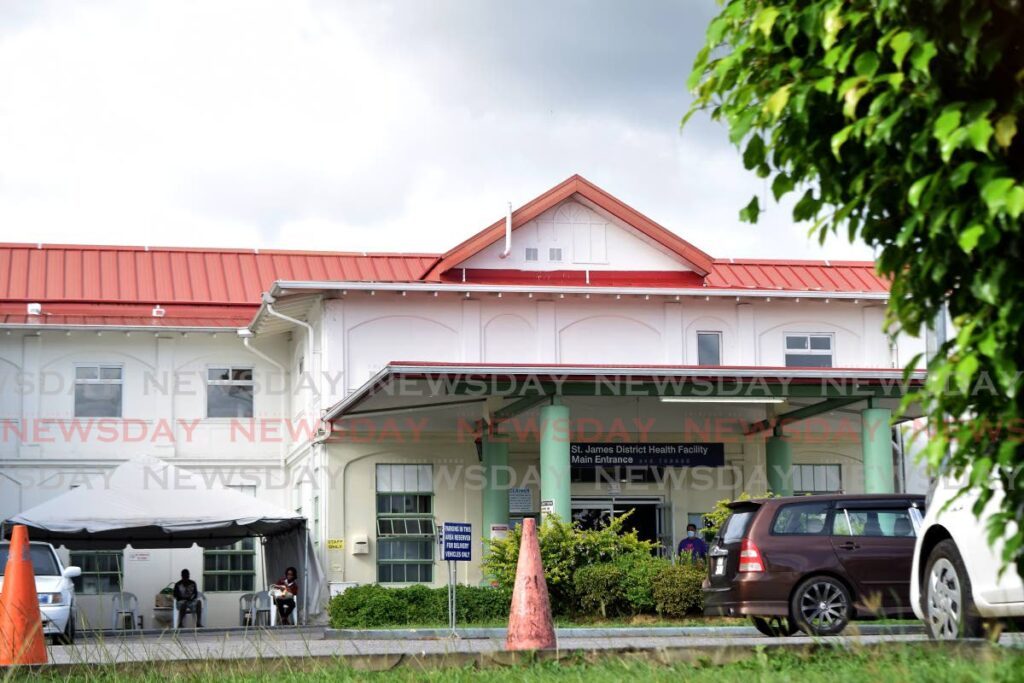Understanding health sector history

KENWYN NICHOLLS
UNHAPPINESS with the performance of the TT health sector, simmering as it has been for some time now with grievances that vacillate from lost charts to extended wait times, to unavailability of critical drugs, to yet inexplicable neonatal intensive care unit (NICU) deaths, you name it, boiled over on April 19 last when the editor of a daily newspaper penned a column: "An unhealthy health sector." Eight days later, May 8, a featured columnist chimed in with: "Healthcare in crisis."
The aim of this article is to explore the issues that have led to this unfortunate juncture and, hopefully, by doing so point the way forward to a successful turnaround.
Disillusionment with the performance of the health sector is not a recent phenomenon. Such negativity is greater than five decades old but a call for definitive action to address the situation did not materialise until 1988 when the government approached the Inter-American Development Bank (IDB) for support in strengthening primary care infrastructure, and to make functional the Eric Williams Medical Sciences Complex (EWMSC), which had been in virtual mothballs since its commissioning in 1986.
The bank did not disfavour the specific request but reached an understanding with the government that such support would take place within the context of a probe of the sector, widely viewed then to be underperforming, ie, not meeting the health demands of the population.
Grant money was awarded by the IDB in 1991, and following an international tendering process, consultants from the UK – Health and Life Science Partnership (HLSP) – contracted to conduct the necessary studies and make recommendations. My role, via a separate IDB contract (1991-1995), was to assist the selection of the consulting firm, oversee the work of the individual consultants, and relay the final report to the minister. The consultants were on the ground for 18 months and tabled their final report – 20 documents – in May 1994.
The detailed findings and recommendations of the HLSP team of consultants exceed the bounds of this article. Suffice it to say that the major finding of the consultant group was that, like most other developed and developing countries of that era, the TT population was living longer with an associated increased prevalence of preventable chronic conditions that were lifestyle related and socially determined: welcome to 21st century health and socio-economic challenges.
An associated major finding was that the health system in place, constructed as it was on acute hospital-centric care – to meet the 20th century health challenges posed by infectious disease – was antithetical to the primary care and public health approach that was required to address 21st century health and social challenges; reform was needed. The Health Sector Reform Plan (HSRP) recommended by the consultants held great promise as the vehicle for the needed reform.
In 1995 the IDB approved an overall loan package of US$192 million (of which US$34 million was counterpart funds provided by the government) to finance the HSRP, based on the framework developed by the consultants. The new dispensation required the rationalisation of hospital services and emphasis being placed on prevention and health promotion at the primary level, with a particular focus on primary-level management of chronic diseases.
Smaller hospitals, many in rural areas, were to be closed and staff retrained to function in five larger municipal hospitals, or wherever needed in the new dispensation: (The Mount Hope Hospital fully functional in 1997), health centres of varying levels (1-3), some to be newly constructed, older ones refurbished to purpose, and new entities – district health facilities (DHFs), launched: all in support of the novel primary healthcare infrastructure.
This disaggregation of public health services became muddled with operationalisation of the RHA Act 1994, aka the Decentralisation Act of 1994, in which five regional health authorities (RHAs) were created to deliver public healthcare services (closer to the population), the Ministry of Health retaining responsibility for determining the broad and detailed policies the RHAs should follow, as well as planning, regulating and, most important, resource allocation – human and budgetary – the last via annual service agreements (ASAs) to be signed between the ministry and the RHAs.
The muddleness has stemmed from the form of decentralisation chosen: geographic. Under this dispensation RHA boards are responsible for the operations of all public health facilities within their defined geographic area. For example, the North West Regional Health Authority (NWRHA) board has under its purview 19 health centres including three mental health facilities, one district health facility, the St Ann’s Psychiatric Hospital, the St James Medical Complex including oncology services, and the Port of Spain General Hospital.
RHA board energies have been and continue to be mainly focused on hospital operations. As Independent Senator Sunity Maharaj noted in her contribution to the 2023-2024 budget debate, no monies were allocated to address non-communicable diseases (NCD)s, TT’s No 1 public health problem.
So, we have, in effect, persistence of the situation uncovered by the HLSP consultants over three decades ago. Twenty-first century health and social issues being addressed by a health sector built to address 20th century health issues; a reactive health system rather than the proactive that is required; lengthy wait times for hospital beds; long delays in receiving critical diagnoses, results and reports; overworked health professionals; shortages of or broken critical diagnostic and therapeutic equipment; people forced to seek care overseas, etc are all symptoms of an unsuited, overburdened hospital-centric health system.
How to fix this will be addressed in another article.


Comments
"Understanding health sector history"